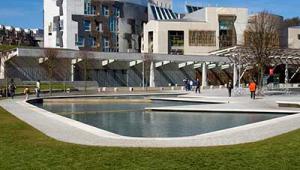Nicola Sturgeon’s proposals for local tax reform in Scotland have been predictably criticised by her political opponents. But a closer and more objective look at what it means in the longer term reveals an underlying imaginative and progressive set of proposals. It could mean that local tax in Scotland will look very different in future, if the Scottish National Party regains power in May.
Scotland (like the rest of the UK) has been searching for a replacement to council tax ever since its introduction in 1993. Its initial acceptance was based mainly on the fact that it wasn’t the community charge – the tax that it was hastily introduced to replace. Since then there have been various attempts over the years to replace it, with all political parties adopting a position on local tax reform at some point.
In 2007 it seemed as if major change was possible with proposals for a local income tax emerging. This came just a few years after the Burt review, which had proposed a percentage charge on the value of a house, was not adopted.
The current Scottish Government has consistently said that a fairer alternative would be sought and the Commission on Local Tax Reform was the latest review to take place in Scotland. Nicola Sturgeon’s recent announcement is the response to the report by Commission on Local Tax Reform. It now seems feasible, after a number of reviews over the years, that finally it is this commission that has finally triggered change, although not all of the commissions’ recommendations will be adopted.
The proposal generating the local headlines is that the council tax will not be scrapped but will be reformed. Four of the higher bands will see the multiplier increased. This means that the relationship between the highest value houses and the lowest value houses will change. The number of bands overall will remain but higher value houses will pay more council tax.
The council tax freeze which has been a cornerstone of Scottish Government policy for years will end in April 2017. While this will be welcomed by councils, it could mean higher council tax bills. It is here, however, where Nicola Sturgeon will seek to continue to have a say in local tax levels with future rises restricted to 3%. This is in effect a national cap on local tax and we await the detail of how this will be operated in practice. The wider issue is that property tax will remain part of local authority financing.
But it is in the longer-term future proposals where local tax takes a different and more imaginative turn. The proposal is to assign 25% of Scotland’s future income tax receipts to councils. This would replace revenue grant and it could result in much-needed increased revenue for Scottish councils. Local economic growth could be rewarded with increased funding although it’s not yet clear where the volatility risk would lie.
There are separate proposals to consider a levy on vacant and derelict land (the first steps towards a form of land value tax).
One of the effects would be to reduce the level of local government spending funded by direct Scottish Government grant. It would therefore mean that taxation (whether locally raised or assigned) would provide the majority of local government funding.
This also means that the much-anticipated new tax powers in Scotland would immediately be applied to local services rather than to national issues.
The proposals taken together do introduce a measure of progression to local finances and that is to be welcomed. It means that property, income and land could all feature as part of the local taxation system. We now await the tax proposal from the remaining political parties. What is now certain is that how local services are funded becomes a key point of debate as Scotland goes forward into the May election. For the electorate, there will be choice about a fairer and more progressive local tax option.




















